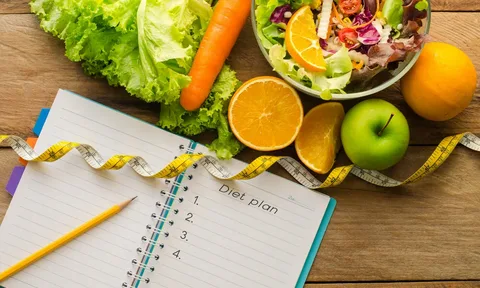Achieving a balanced diet is one of the most important aspects of maintaining good health and well-being. A nutritious, well-rounded diet not only fuels your body with the necessary energy but also helps reduce the risk of chronic diseases, supports a healthy weight, and improves mental and physical performance. Whether you’re starting your health journey or fine-tuning your eating habits, this ultimate guide will provide practical tips and tricks for creating and maintaining a balanced diet.
What Is a Balanced Diet?
A balanced diet means eating a variety of foods in the right proportions to ensure your body gets all the nutrients it needs. The key components of a balanced diet include:
- Macronutrients: These include carbohydrates, proteins, and fats, which provide energy and are necessary for growth and repair.
- Micronutrients: These are vitamins and minerals that support bodily functions, such as immune health, bone strength, and metabolism.
- Hydration: Water is essential for digestion, nutrient absorption, and overall bodily function.
A healthy, balanced diet typically includes a variety of fruits, vegetables, whole grains, lean proteins, and healthy fats, all consumed in appropriate amounts based on individual needs.
Key Components of a Balanced Diet
- Eat a Variety of Fruits and Vegetables
Fruits and vegetables are rich in essential vitamins, minerals, and fiber, and they should make up a significant portion of your daily meals. Aim to fill half your plate with colorful fruits and vegetables at each meal. The different colors in fruits and veggies indicate the presence of various nutrients, so eating a wide variety ensures you’re getting a broad spectrum of benefits.
- Tip: Try to consume at least 5 servings of fruits and vegetables a day, with a focus on seasonal and local produce. Incorporate leafy greens like spinach, cruciferous vegetables like broccoli, and vitamin C-rich fruits like oranges into your daily diet.
- Choose Whole Grains Over Refined Grains
Whole grains are an excellent source of fiber, which aids digestion and helps maintain stable blood sugar levels. Unlike refined grains, which have been stripped of nutrients, whole grains provide more vitamins, minerals, and antioxidants.
- Tip: Replace white bread, rice, and pasta with whole grain alternatives like brown rice, quinoa, whole wheat bread, and oats. Look for the word “whole” in the ingredient list to ensure you’re getting true whole grains.
- Incorporate Lean Proteins
Protein is essential for muscle repair, immune function, and hormone production. Choose lean sources of protein to support these functions while keeping fat intake in check. Lean proteins include poultry, fish, eggs, legumes, and tofu.
- Tip: Aim for a palm-sized portion of protein with each meal. For a plant-based option, incorporate beans, lentils, chickpeas, or quinoa into salads, soups, or as a side dish.
- Healthy Fats Are Key
Contrary to the outdated belief that all fats are bad, healthy fats are a vital component of a balanced diet. Unsaturated fats, such as those found in avocados, olive oil, nuts, and seeds, support heart health, brain function, and the absorption of fat-soluble vitamins.
- Tip: Avoid trans fats and limit saturated fats by cooking with olive oil or avocado oil instead of butter. Add nuts or seeds to salads and smoothies for an extra boost of healthy fats.
- Control Portion Sizes
Even healthy foods can contribute to weight gain if eaten in excess. Understanding portion sizes and practicing mindful eating can help you enjoy all the foods you love without overindulging.
- Tip: Use your hand as a guide for portion control: a serving of protein is about the size of your palm, a serving of vegetables is roughly the size of your fist, a serving of carbohydrates is the size of a cupped hand, and a serving of fat is about the size of your thumb.
- Stay Hydrated
Water plays a crucial role in digestion, nutrient absorption, temperature regulation, and overall bodily function. Dehydration can lead to fatigue, headaches, and poor concentration.
- Tip: Aim to drink at least 8 cups of water a day. Herbal teas and water-rich fruits and vegetables like cucumbers and watermelon can also help you stay hydrated.
- Limit Added Sugars and Processed Foods
Added sugars and highly processed foods are often calorie-dense but nutrient-poor. Consuming too much sugar can lead to weight gain, increased risk of heart disease, and type 2 diabetes.
- Tip: Reduce your intake of sugary snacks, beverages, and processed foods by choosing whole foods whenever possible. Sweeten your meals with natural sources like fruit or honey, and opt for homemade versions of your favorite snacks.
- Plan and Prep Your Meals
Planning your meals in advance helps you stick to a balanced diet and prevents unhealthy food choices made in a rush. Meal prepping can save time during busy weeks and ensures you always have nutritious options on hand.
- Tip: Set aside time each week to plan your meals and snacks. Prepare large batches of healthy foods like roasted vegetables, quinoa, or grilled chicken, and store them in portion-sized containers for easy meals throughout the week.
Tips for Long-Term Success
- Listen to Your Body
Eating should be a positive experience, and understanding your body’s hunger and fullness cues can help you make better food choices. Eat when you’re hungry and stop when you’re satisfied, rather than overeating.
- Tip: Practice mindful eating by focusing on your food during meals—avoid distractions like TV or phones. This helps you become more aware of portion sizes and the flavors of the food you’re eating.
- Focus on Progress, Not Perfection
Achieving a balanced diet is about making sustainable, long-term changes, not restrictive diets or short-term fads. Focus on progress and small improvements, rather than aiming for perfection.
- Tip: If you slip up and have an unhealthy meal or day, don’t get discouraged. Simply return to healthier habits at your next meal.
- Make Healthy Swaps
Making small, healthy swaps can have a big impact over time. Instead of drastically changing your diet overnight, swap out unhealthy ingredients with healthier alternatives.
- Examples:
- Swap sugary breakfast cereals with oatmeal topped with fresh fruit and nuts.
- Replace soda or sugary drinks with sparkling water flavored with lemon or mint.
- Use Greek yogurt instead of sour cream in recipes for a protein-rich alternative.
- Eat a Rainbow
Eating a variety of colorful fruits and vegetables ensures that you’re getting a wide range of nutrients. Different colors represent different vitamins, minerals, and antioxidants that support overall health.
- Tip: Challenge yourself to include as many colors as possible on your plate each day. Think of vibrant foods like purple eggplant, red peppers, green kale, and orange carrots.
- Stay Active
While diet is crucial for good health, it goes hand in hand with regular physical activity. Staying active helps maintain a healthy weight, boosts energy levels, and supports overall physical and mental health.
- Tip: Find an activity you enjoy, whether it’s walking, swimming, dancing, or yoga. Aim for at least 150 minutes of moderate exercise per week to complement your healthy diet.
Sample One-Day Balanced Meal Plan
Here’s an example of a one-day balanced meal plan to give you an idea of how to incorporate healthy eating into your daily routine:
- Breakfast: Oatmeal topped with fresh berries, a tablespoon of chia seeds, and a drizzle of honey.
- Snack: A handful of almonds and a banana.
- Lunch: Grilled chicken salad with mixed greens, cherry tomatoes, cucumbers, and olive oil vinaigrette. Whole grain crackers on the side.
- Snack: Greek yogurt with a sprinkle of granola and sliced apples.
- Dinner: Baked salmon with quinoa and roasted Brussels sprouts.
- Dessert: Dark chocolate square or a small bowl of fruit.
Conclusion
Healthy eating doesn’t have to be complicated or restrictive. By focusing on balance, variety, and moderation, you can create a sustainable and enjoyable diet that supports your health and well-being. Use these tips and tricks to guide you on your journey toward healthier eating habits, and remember that small changes can lead to significant, lasting results. With the right approach, a balanced diet can be both delicious and satisfying, fueling your body and mind for success.



